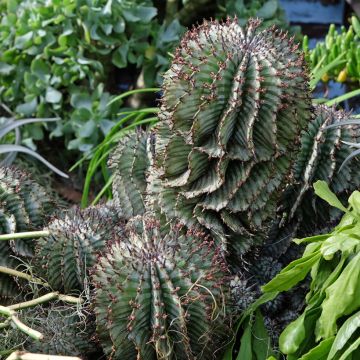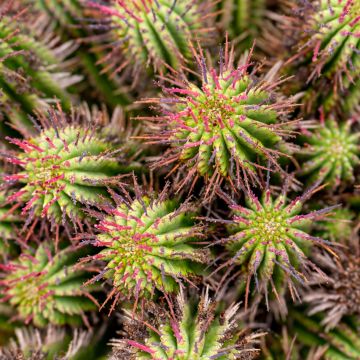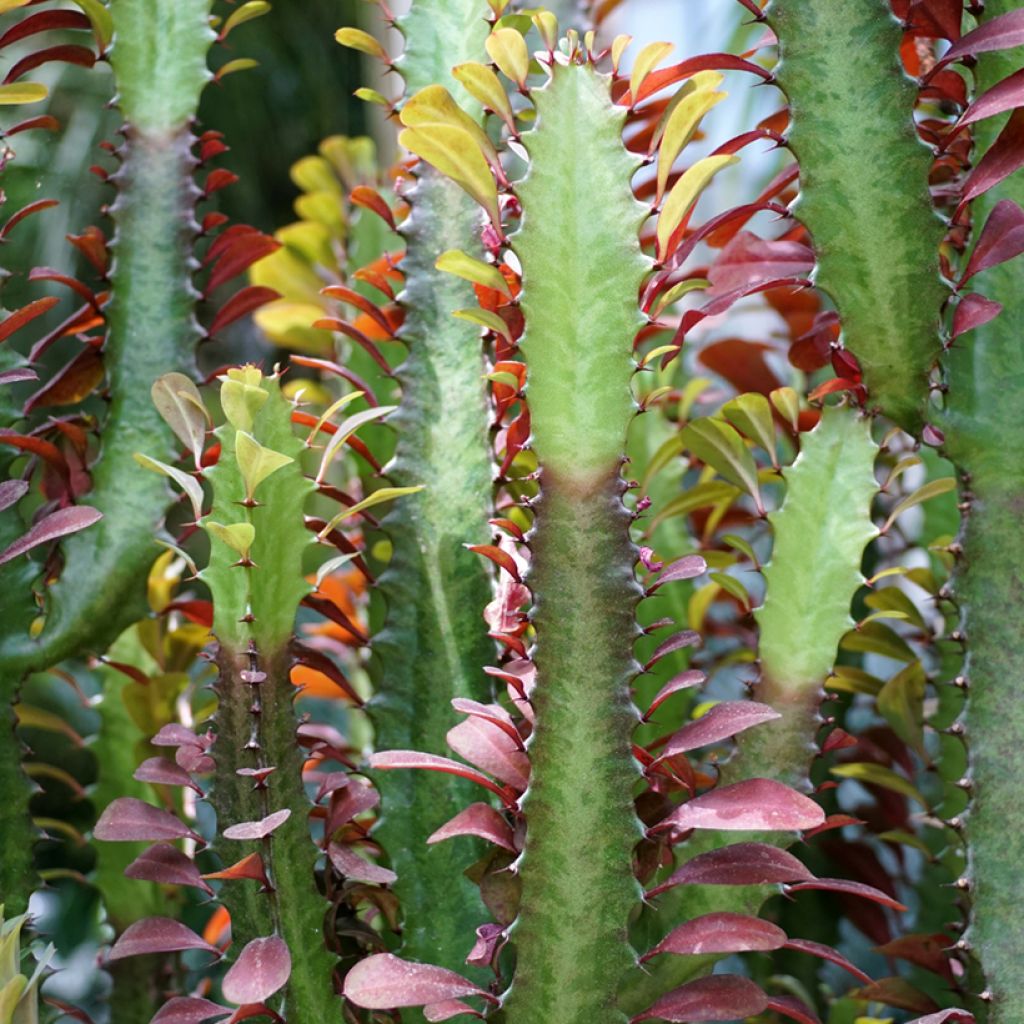

Euphorbia trigona f. rubra - African milk tree


Euphorbia trigona f. rubra - African milk tree
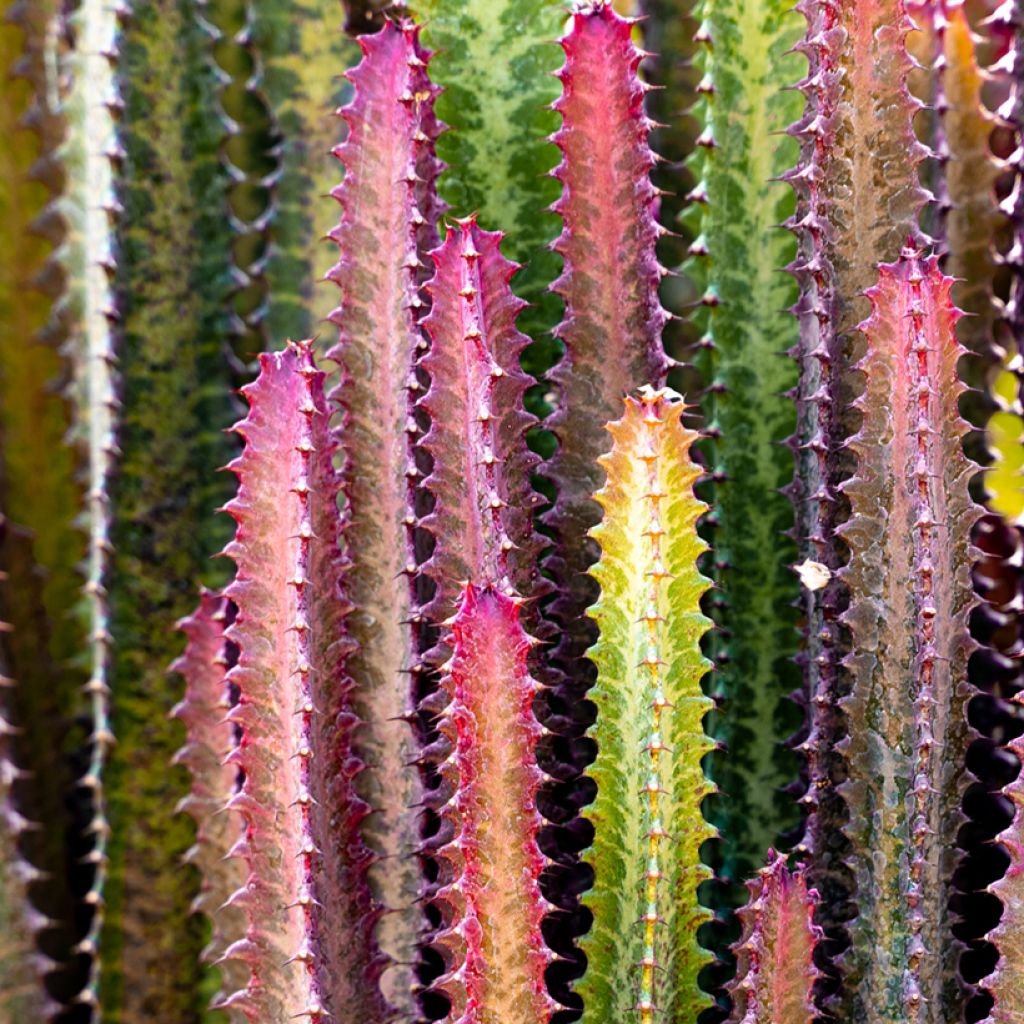

Euphorbia trigona f. rubra - African milk tree
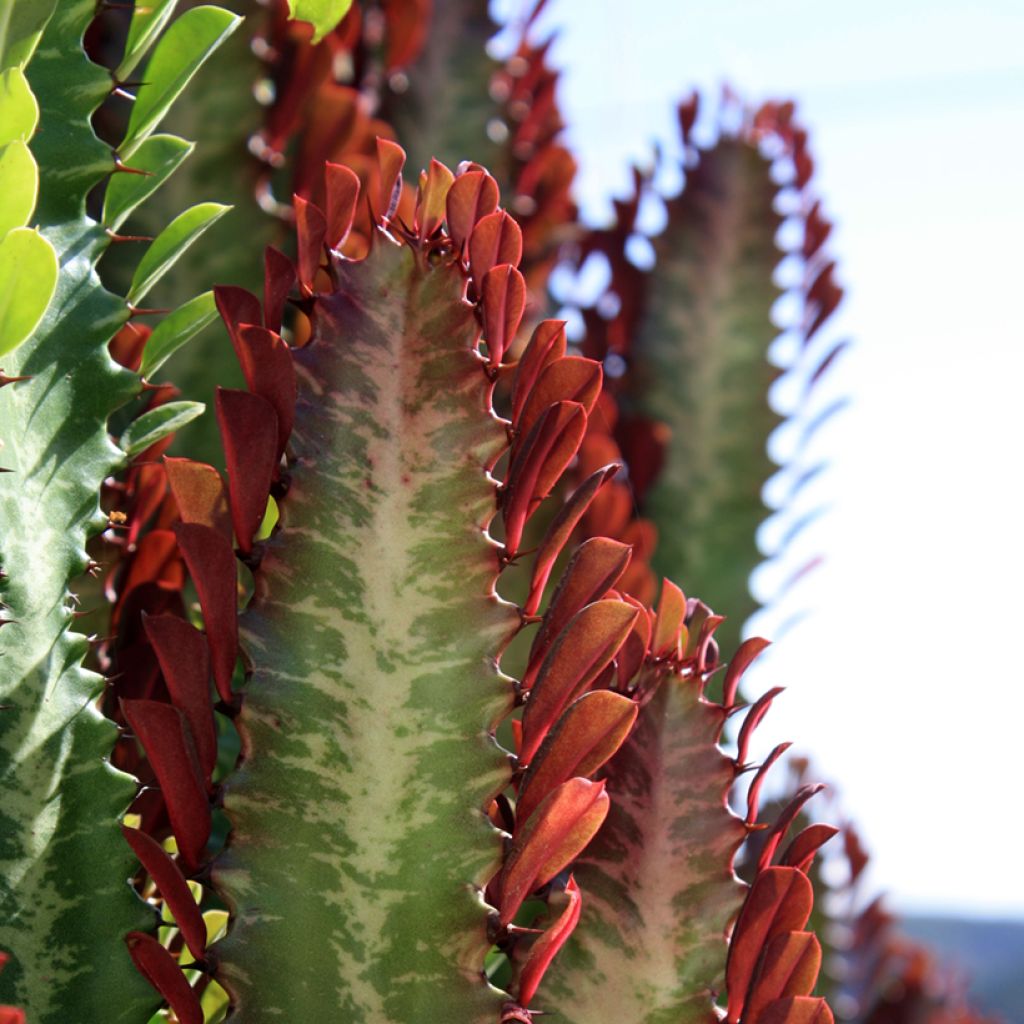

Euphorbia trigona f. rubra - African milk tree
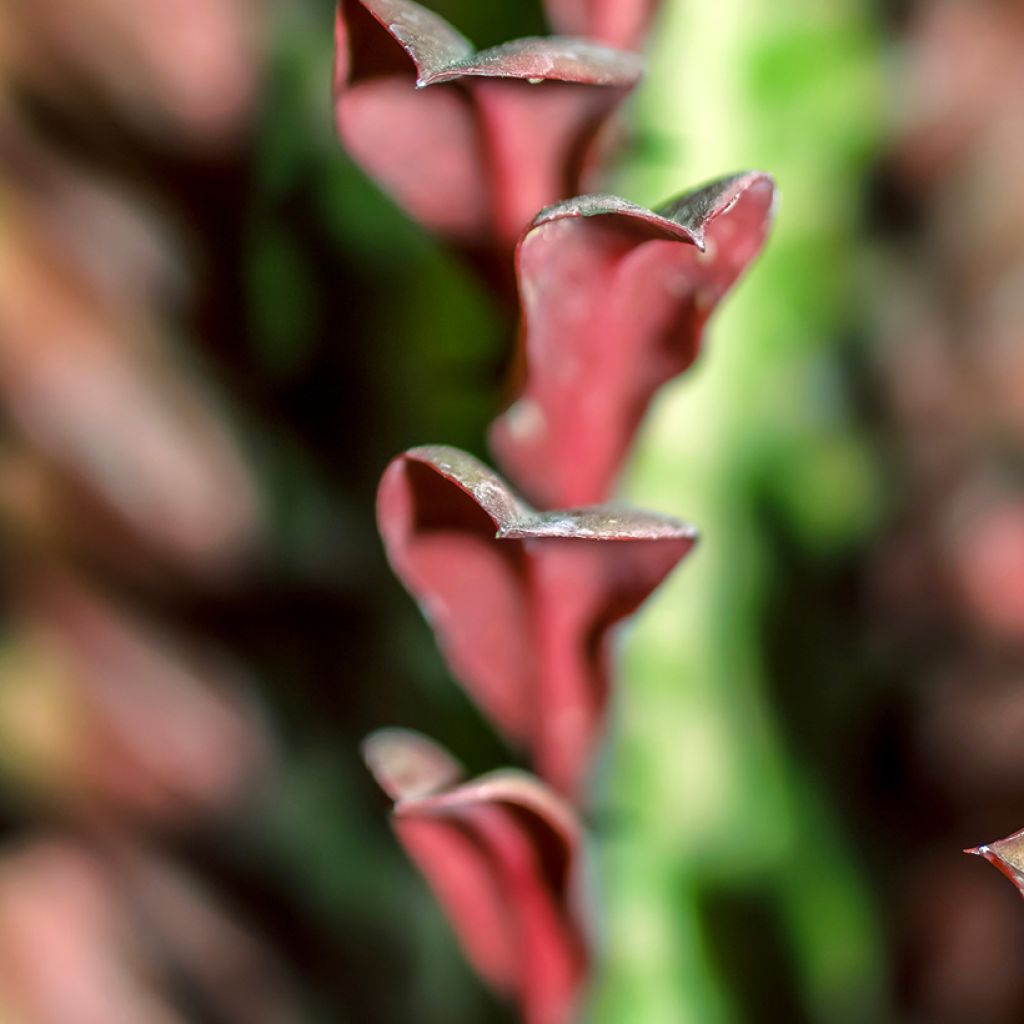

Euphorbia trigona f. rubra - African milk tree
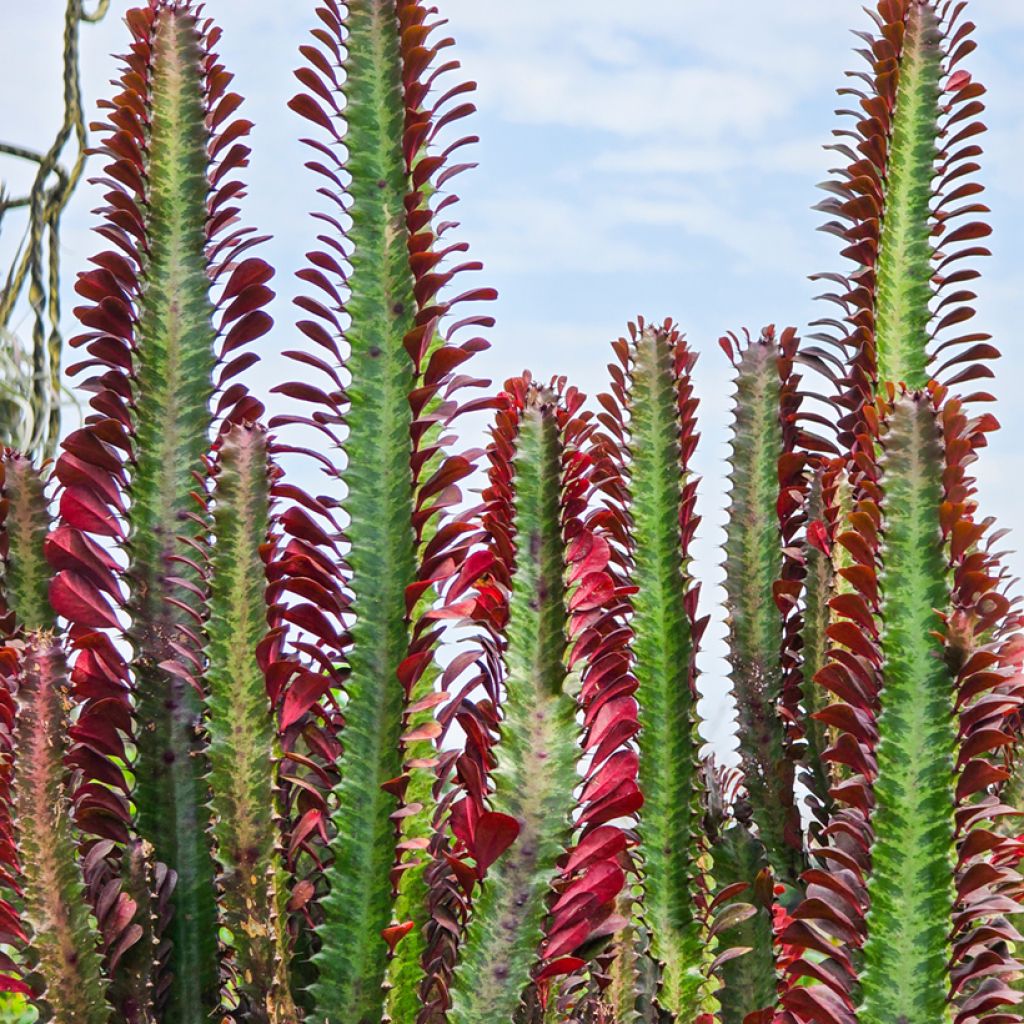

Euphorbia trigona f. rubra - African milk tree
Euphorbia trigona f. rubra - African milk tree
Euphorbia trigona f. rubra
African milk tree, marble column
I have had one sitting indoors for years without any care. The first summer, it grew on the terrace. Since bringing it back inside, I've neglected it. These tips are helpful for a new blooming it deserves.
Marie-Christine, 22/08/2025
Special offer!
Receive a €20 voucher for any order over €90 (excluding delivery costs, credit notes, and plastic-free options)!
1- Add your favorite plants to your cart.
2- Once you have reached €90, confirm your order (you can even choose the delivery date!).
3- As soon as your order is shipped, you will receive an email containing your voucher code, valid for 3 months (90 days).
Your voucher is unique and can only be used once, for any order with a minimum value of €20, excluding delivery costs.
Can be combined with other current offers, non-divisible and non-refundable.
Why not try an alternative variety in stock?
View all →This plant carries a 30 days recovery warranty
More information
We guarantee the quality of our plants for a full growing cycle, and will replace at our expense any plant that fails to recover under normal climatic and planting conditions.
Description
Euphorbia trigona f. rubra, also known as the red cactus spurge or red-leaved African milk tree, is a magnificent plant specimen. Unlike the classic green form, its foliage is coloured in intense red to deep purple, depending on the light. Its sculptural habit and vibrant colours make it an extraordinary houseplant. Just as hardy as the green variety, it requires minimal maintenance, adapts to dry environments and thrives in bright light. In the living room, office or conservatory, it pairs perfectly with ceramic or concrete pots.
Euphorbia trigona f. rubra is a form of Euphorbia trigona distinguished by the red to purple pigmentation of its stems and leaves. This plant belongs to the Euphorbiaceae family. The original species is native to Central Africa, particularly regions of Gabon, Angola and Congo. In its natural habitat, it grows in warm, dry and sunny environments, which explains its drought tolerance and preference for bright light. This shrubby succulent plant develops upright, fleshy and branched stems with three or four ribs and prominent aristas. Small reddish-brown thorns, measuring 2 to 4 mm, grow in pairs along the aristas. Between these thorns are spatulate leaves, 3 to 5 cm long. These leaves can persist for a long time on the plant if temperature and watering conditions are adequate. Indoors, Euphorbia trigona f. rubra reaches a maximum height of around 1.8 m. Its spread depends on the space available for growth.
Indoors, Euphorbia trigona f. rubra prefers bright light exposure, even direct sunlight, to maintain the intensity of its purple colouration. It adapts well to dry atmospheres and tolerates typical household temperatures, between 15 and 24°C. Moderate watering is recommended, allowing the substrate to dry out between waterings to avoid excess moisture. A well-draining potting mix, such as a cactus blend, is ideal for this plant. Adding liquid fertiliser for succulent plants once a month during the growth period will encourage its development.
With its candelabra-like silhouette and rich colouring, the purple cactus spurge makes a striking statement in modern or minimalist interiors. It can be showcased in a bright living room, a well-lit office or a conservatory. White ceramic or concrete pots will highlight its unique aesthetic. You can place it near a variegated Ficus houseplant and a Schefflera arboricola. Avoid placing it in humid rooms like the bathroom, as it prefers a dry atmosphere.
Report an error about the product description
Euphorbia trigona f. rubra - African milk tree in pictures
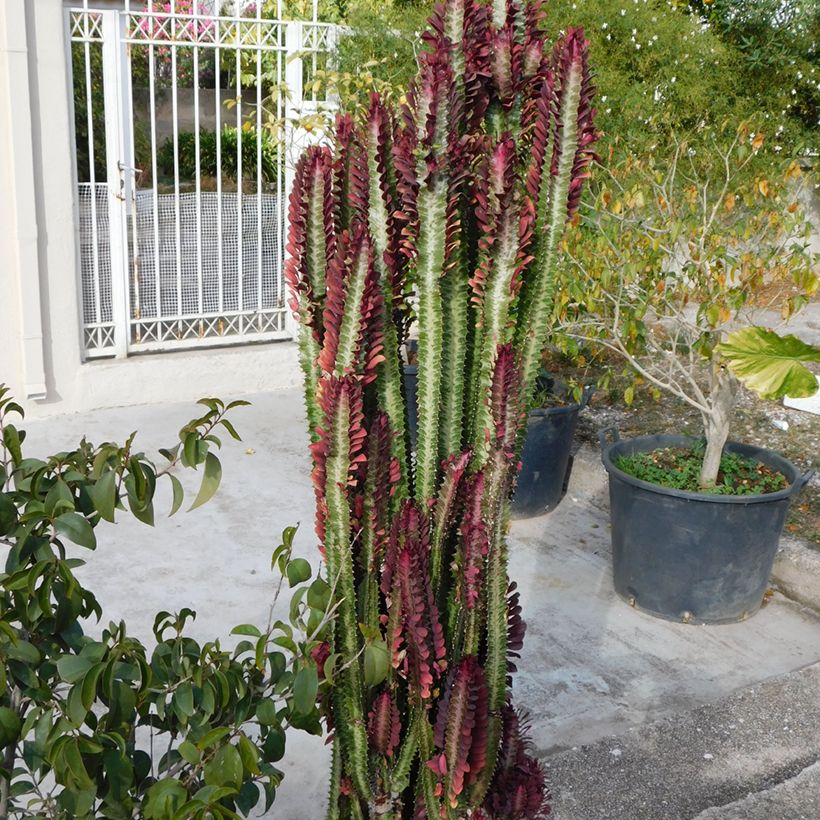

Foliage
Plant habit
Botanical data
Euphorbia
trigona f. rubra
Euphorbiaceae
African milk tree, marble column
Central Africa
Safety measures
atteintescutaneomuqueuses
Cette plante peut provoquer l'apparition de réactions cutanées indésirables, une atteinte des yeux, ou des difficultés respiratoires si elle est ingérée.
Ne la plantez pas là où de jeunes enfants peuvent évoluer. Evitez tout contact avec la peau: privilégiez l'emploi de gants pour la manipuler. En cas de contact, lavez-vous soigneusement les mains et rincez abondamment à l'eau la zone concernée. Lavez les vêtements entrés en contact. En cas de réaction cutanée, contactez votre médecin ou le centre antipoison le plus proche de chez vous. En cas d'atteinte étendue ou de difficultés respiratoires, appelez immédiatement le 15 ou le 112.Pensez à conserver l'étiquette de la plante, à la photographier ou à noter son nom, afin de faciliter le travail des professionnels de santé.
Davantage d'informations sur https://plantes-risque.info
Location
Location
Maintenance and care
Watering tips
Potting advice, substrates and fertilisers
Houseplant care
Disease and pest advice
Maintenance and care
-
, onOrder confirmed
Reply from on Promesse de fleurs
Haven't found what you were looking for?
Hardiness is the lowest winter temperature a plant can endure without suffering serious damage or even dying. However, hardiness is affected by location (a sheltered area, such as a patio), protection (winter cover) and soil type (hardiness is improved by well-drained soil).

Photo Sharing Terms & Conditions
In order to encourage gardeners to interact and share their experiences, Promesse de fleurs offers various media enabling content to be uploaded onto its Site - in particular via the ‘Photo sharing’ module.
The User agrees to refrain from:
- Posting any content that is illegal, prejudicial, insulting, racist, inciteful to hatred, revisionist, contrary to public decency, that infringes on privacy or on the privacy rights of third parties, in particular the publicity rights of persons and goods, intellectual property rights, or the right to privacy.
- Submitting content on behalf of a third party;
- Impersonate the identity of a third party and/or publish any personal information about a third party;
In general, the User undertakes to refrain from any unethical behaviour.
All Content (in particular text, comments, files, images, photos, videos, creative works, etc.), which may be subject to property or intellectual property rights, image or other private rights, shall remain the property of the User, subject to the limited rights granted by the terms of the licence granted by Promesse de fleurs as stated below. Users are at liberty to publish or not to publish such Content on the Site, notably via the ‘Photo Sharing’ facility, and accept that this Content shall be made public and freely accessible, notably on the Internet.
Users further acknowledge, undertake to have ,and guarantee that they hold all necessary rights and permissions to publish such material on the Site, in particular with regard to the legislation in force pertaining to any privacy, property, intellectual property, image, or contractual rights, or rights of any other nature. By publishing such Content on the Site, Users acknowledge accepting full liability as publishers of the Content within the meaning of the law, and grant Promesse de fleurs, free of charge, an inclusive, worldwide licence for the said Content for the entire duration of its publication, including all reproduction, representation, up/downloading, displaying, performing, transmission, and storage rights.
Users also grant permission for their name to be linked to the Content and accept that this link may not always be made available.
By engaging in posting material, Users consent to their Content becoming automatically accessible on the Internet, in particular on other sites and/or blogs and/or web pages of the Promesse de fleurs site, including in particular social pages and the Promesse de fleurs catalogue.
Users may secure the removal of entrusted content free of charge by issuing a simple request via our contact form.
The flowering period indicated on our website applies to countries and regions located in USDA zone 8 (France, the United Kingdom, Ireland, the Netherlands, etc.)
It will vary according to where you live:
- In zones 9 to 10 (Italy, Spain, Greece, etc.), flowering will occur about 2 to 4 weeks earlier.
- In zones 6 to 7 (Germany, Poland, Slovenia, and lower mountainous regions), flowering will be delayed by 2 to 3 weeks.
- In zone 5 (Central Europe, Scandinavia), blooming will be delayed by 3 to 5 weeks.
In temperate climates, pruning of spring-flowering shrubs (forsythia, spireas, etc.) should be done just after flowering.
Pruning of summer-flowering shrubs (Indian Lilac, Perovskia, etc.) can be done in winter or spring.
In cold regions as well as with frost-sensitive plants, avoid pruning too early when severe frosts may still occur.
The planting period indicated on our website applies to countries and regions located in USDA zone 8 (France, United Kingdom, Ireland, Netherlands).
It will vary according to where you live:
- In Mediterranean zones (Marseille, Madrid, Milan, etc.), autumn and winter are the best planting periods.
- In continental zones (Strasbourg, Munich, Vienna, etc.), delay planting by 2 to 3 weeks in spring and bring it forward by 2 to 4 weeks in autumn.
- In mountainous regions (the Alps, Pyrenees, Carpathians, etc.), it is best to plant in late spring (May-June) or late summer (August-September).
The harvesting period indicated on our website applies to countries and regions in USDA zone 8 (France, England, Ireland, the Netherlands).
In colder areas (Scandinavia, Poland, Austria...) fruit and vegetable harvests are likely to be delayed by 3-4 weeks.
In warmer areas (Italy, Spain, Greece, etc.), harvesting will probably take place earlier, depending on weather conditions.
The sowing periods indicated on our website apply to countries and regions within USDA Zone 8 (France, UK, Ireland, Netherlands).
In colder areas (Scandinavia, Poland, Austria...), delay any outdoor sowing by 3-4 weeks, or sow under glass.
In warmer climes (Italy, Spain, Greece, etc.), bring outdoor sowing forward by a few weeks.






























